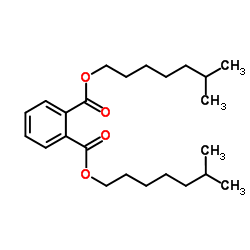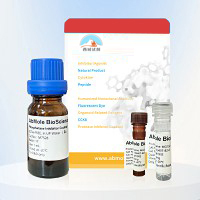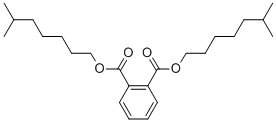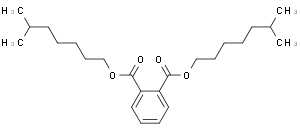邻苯二甲酸二异辛酯,Diisooctyl Phthalate,分析标准品,99.9%(异构体混合物)
产品编号:Bellancom-YE108439| CAS NO:27554-26-3| 分子式:C24H38O4| 分子量:390.56
本网站销售的所有产品仅用于工业应用或者科学研究等非医疗目的,不可用于人类或动物的临床诊断或者治疗,非药用,非食用,
| 英文名称 | Diisooctyl Phthalate |
|---|---|
| CAS编号 | 27554-26-3 |
| 产品熔点 | -43ºC |
| 产品沸点 | 384.9±10.0 °C at 760 mmHg |
| 产品密度 | 1.0±0.1 g/cm3 |
| 产品闪点 | 204.5±8.5 °C |
| 精确质量 | 390.277008 |
| PSA | 52.60000 |
| LogP | 8.71 |
| 外观性状 | 无色液体 |
| 蒸气压 | 0.0±0.9 mmHg at 25°C |
| 折射率 | 1.489 |
| 稳定性 | 遵照规定使用和储存则不会分解。 |
| 储存条件 | 密闭于阴凉干燥环境中 |
相关文档
化学品安全说明书(MSDS)
下载MSDS质检证书(COA)
相关产品
| 危害码 (欧洲) | Xn: Harmful; |
|---|---|
| 风险声明 (欧洲) | R2;R24/25 |
| 安全声明 (欧洲) | S23-S36/37-S24/25-S2 |
| WGK德国 | 1 |
| RTECS号 | TI1300000 |
Synonym:1,2-Benzenedicarboxylic acid, diisooctyl ester; phthalic acid, bis(6-methylheptyl)ester Section 2 - COMPOSITION, INFORMATION ON INGREDIENTS
Risk Phrases: None Listed. Section 3 - HAZARDS IDENTIFICATION EMERGENCY OVERVIEW
Carcinogen.Possible risks of irreversible effects.The toxicological properties of this material have not been fully investigated. Potential Health Effects Eye: May cause eye irritation. Skin: May cause skin irritation. Ingestion: May cause gastrointestinal irritation with nausea, vomiting and diarrhea. The toxicological properties of this substance have not been fully investigated. Inhalation: May cause respiratory tract irritation. The toxicological properties of this substance have not been fully investigated. Chronic: May cause cancer in humans. May cause reproductive and fetal effects. Section 4 - FIRST AID MEASURES Eyes: Immediately flush eyes with plenty of water for at least 15 minutes, occasionally lifting the upper and lower eyelids. Get medical aid. Skin: Flush skin with plenty of water for at least 15 minutes while removing contaminated clothing and shoes. Get medical aid if irritation develops or persists. Ingestion: If victim is conscious and alert, give 2-4 cupfuls of milk or water. Never give anything by mouth to an unconscious person. Get medical aid. Inhalation: Remove from exposure and move to fresh air immediately. If not breathing, give artificial respiration. If breathing is difficult, give oxygen. Get medical aid. Notes to Physician: Section 5 - FIRE FIGHTING MEASURES General Information: As in any fire, wear a self-contained breathing apparatus in pressure-demand, MSHA/NIOSH (approved or equivalent), and full protective gear. During a fire, irritating and highly toxic gases may be generated by thermal decomposition or combustion. Extinguishing Media: For small fires, use dry chemical, carbon dioxide, water spray or alcohol-resistant foam. Section 6 - ACCIDENTAL RELEASE MEASURES General Information: Use proper personal protective equipment as indicated in Section 8. Spills/Leaks: Absorb spill with inert material (e.g. vermiculite, sand or earth), then place in suitable container. Clean up spills immediately, observing precautions in the Protective Equipment section. Section 7 - HANDLING and STORAGE Handling: Wash thoroughly after handling. Wash hands before eating. Remove contaminated clothing and wash before reuse. Use with adequate ventilation. Avoid contact with skin and eyes. Avoid ingestion and inhalation. Storage: Store in a cool, dry place. Store in a tightly closed container. Section 8 - EXPOSURE CONTROLS, PERSONAL PROTECTION Engineering Controls: Use adequate ventilation to keep airborne concentrations low. Exposure Limits CAS# 27554-26-3: United Kingdom, WEL - TWA: 5 mg/m3 TWA United Kingdom, WEL - STEL: 15 mg/m3 STEL Personal Protective Equipment Eyes: Wear appropriate protective eyeglasses or chemical safety goggles as described by OSHA's eye and face protection regulations in 29 CFR 1910.133 or European Standard EN166. Skin: Wear appropriate protective gloves to prevent skin exposure. Clothing: Wear appropriate protective clothing to prevent skin exposure. Respirators: Follow the OSHA respirator regulations found in 29 CFR 1910.134 or European Standard EN 149. Use a NIOSH/MSHA or European Standard EN 149 approved respirator if exposure limits are exceeded or if irritation or other symptoms are experienced. Section 9 - PHYSICAL AND CHEMICAL PROPERTIES Physical State: Liquid Color: colorless Odor: Not available. pH: Not available. Vapor Pressure: 1 mm Hg @ 200 C Viscosity: Not available. Boiling Point: 399 deg C Freezing/Melting Point: -50 deg C Autoignition Temperature: Not applicable. Flash Point: 227 deg C ( 440.60 deg F) Explosion Limits, lower: Not available. Explosion Limits, upper: Not available. Decomposition Temperature: Not available. Solubility in water: Insoluble in water. Specific Gravity/Density: 0.98 Molecular Formula: C24H38O4 Molecular Weight: 390.2636 Section 10 - STABILITY AND REACTIVITY Chemical Stability: Stable under normal temperatures and pressures. Conditions to Avoid: Incompatible materials. Incompatibilities with Other Materials: Strong oxidants. Hazardous Decomposition Products: Carbon monoxide, irritating and toxic fumes and gases, carbon dioxide. Hazardous Polymerization: Has not been reported. Section 11 - TOXICOLOGICAL INFORMATION RTECS#: CAS# 27554-26-3: TI1300000 LD50/LC50: CAS# 27554-26-3: Oral, mouse: LD50 = 2769 mg/kg; Oral, rat: LD50 = 22 gm/kg; Skin, rabbit: LD50 = 12600 uL/kg. Carcinogenicity: Diisooctyl phthalate - Not listed by ACGIH, IARC, or NTP. Other: See actual entry in RTECS for complete information. Section 12 - ECOLOGICAL INFORMATION Section 13 - DISPOSAL CONSIDERATIONS Products which are considered hazardous for supply are classified as Special Waste and the disposal of such chemicals is covered by regulations which may vary according to location. Contact a specialist disposal company or the local waste regulator for advice. Empty containers must be decontaminated before returning for recycling. Section 14 - TRANSPORT INFORMATION IATA Not regulated as a hazardous material. IMO Not regulated as a hazardous material. RID/ADR Not regulated as a hazardous material. Section 15 - REGULATORY INFORMATION European/International Regulations European Labeling in Accordance with EC Directives Hazard Symbols: Not available. Risk Phrases: Safety Phrases: WGK (Water Danger/Protection) CAS# 27554-26-3: No information available. Canada CAS# 27554-26-3 is listed on Canada's DSL List. CAS# 27554-26-3 is not listed on Canada's Ingredient Disclosure List. US FEDERAL TSCA CAS# 27554-26-3 is listed on the TSCA inventory. SECTION 16 - ADDITIONAL INFORMATION N/A |










 浙公网安备 33010802013016号
浙公网安备 33010802013016号